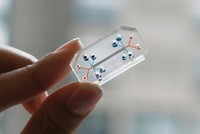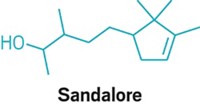Advertisement
Grab your lab coat. Let's get started
Welcome!
Welcome!
Create an account below to get 6 C&EN articles per month, receive newsletters and more - all free.
It seems this is your first time logging in online. Please enter the following information to continue.
As an ACS member you automatically get access to this site. All we need is few more details to create your reading experience.
Not you? Sign in with a different account.
Not you? Sign in with a different account.
ERROR 1
ERROR 1
ERROR 2
ERROR 2
ERROR 2
ERROR 2
ERROR 2
Password and Confirm password must match.
If you have an ACS member number, please enter it here so we can link this account to your membership. (optional)
ERROR 2
ACS values your privacy. By submitting your information, you are gaining access to C&EN and subscribing to our weekly newsletter. We use the information you provide to make your reading experience better, and we will never sell your data to third party members.
Biological Chemistry
First hair-graying gene identified
Discovery has scientists eyeing cosmetic potential
by Elizabeth K. Wilson
March 7, 2016
| A version of this story appeared in
Volume 94, Issue 10
Just when gray hair has become fashionable, scientists are reporting they have identified a gene involved in the hair-graying process (Nat. Commun. 2016, DOI: 10.1038/ncomms10815). A team led by Andrés Ruiz-Linares and Kaustubh Adhikari of University College London analyzed the DNA of 6,630 people from Latin America, identifying numerous genes that influence various aspects of human facial and scalp features, including beard and eyebrow thickness and hair curliness. In this study, however, the gene involved in the graying process, known as IRF4, is receiving the most attention. As Ruiz-Linares notes, “Understanding how IRF4 influences hair graying could help the development of new cosmetic applications that change the appearance of hair as it grows in the follicle by slowing or blocking the graying of hair.” Although scientists have known that IRF4 plays a role in regulating the production and storage of the hair, skin, and eye pigment melanin, the researchers say this is the first time it has been associated with the graying of hair.





Join the conversation
Contact the reporter
Submit a Letter to the Editor for publication
Engage with us on Twitter